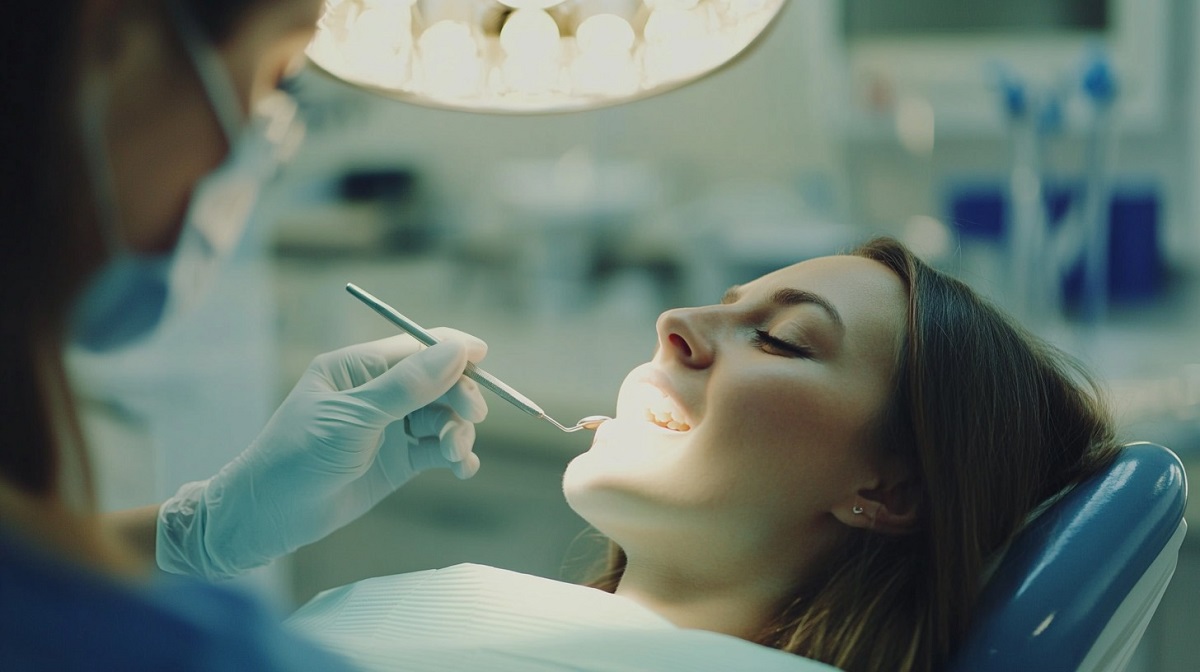
Going to the dentist isn’t the same experience everywhere. In some countries, dental care is covered by the government, while in others, people rely on private insurance or pay out of pocket.
The way a country handles dental insurance affects who gets care and who doesn’t. Some people can afford regular check-ups, while others skip the dentist because it costs too much.
The United States, Germany, and Brazil each have very different approaches to dental coverage. The U.S. has a complicated private insurance system that leaves many without coverage.
Germany provides basic care through public insurance but still requires extra payments for advanced treatments. Brazil offers free dental care through its public healthcare system, but many turn to private insurance for better access.
Let’s take a closer look at why dental insurance works so differently in these countries and what that means for the people who need care.
Key Insights
- United States: Dental insurance is private, often separate from health insurance, and not everyone has coverage. Many people pay high out-of-pocket costs, and Medicare does not include routine dental care.
- Germany: Public health insurance covers basic dental care, but many procedures require extra payment. Millions buy supplementary insurance to reduce costs for treatments like implants, orthodontics, and high-end crowns.
- Brazil: Free public dental care is available through SUS, but services are limited, and wait times are long. Many Brazilians choose private insurance for faster and better-quality care, often at an affordable price.
How Dental Insurance Works in the U.S.

Dental insurance in the U.S. operates separately from general health insurance. Many people get it through their employer, but millions have no coverage at all.
Unlike many other countries, dental care is not automatically included in national healthcare programs, leaving individuals to rely on private insurance or pay out of pocket.
Insurance companies offer two main ways to get coverage: standalone dental plans or dental benefits included in health insurance plans.
Some government programs, like Medicaid, provide dental coverage for low-income children, but adult coverage varies by state.
Medicare, which serves older adults, does not typically cover routine dental care, leaving many seniors without coverage.
Types of Dental Insurance Plans
Several types of dental plans exist, each with different benefits and costs:
- Preferred Provider Organization (PPO): Allows flexibility in choosing dentists, but staying in-network costs less.
- Dental Health Maintenance Organization (DHMO): Requires choosing a dentist within the network and often has lower premiums but limited provider choices.
- Indemnity Plans: Offers the most flexibility, letting patients see any dentist, but often requires paying upfront and waiting for reimbursement.
Coverage and Costs
Dental insurance in the U.S. typically covers three categories of care:
- Preventive Care: Regular check-ups, cleanings, and X-rays, often covered at 100%.
- Basic Procedures: Fillings, extractions, and minor repairs, usually covered at 70-80%.
- Major Procedures: Crowns, bridges, dentures, and root canals, often covered at 50%, leaving patients with significant out-of-pocket costs.
Insurance plans also have annual maximums—a set limit on how much they will pay per year.
Once a person reaches that limit, they must cover all additional costs themselves. Many plans also come with waiting periods, meaning a person must pay premiums for a certain period before they can use benefits for major procedures.
Why Many Americans Don’t Have Coverage?
Despite the availability of dental insurance, millions of Americans lack coverage. The main reason is cost.
Many jobs do not offer dental benefits, and buying insurance independently can be expensive.
Even those with coverage may struggle to afford out-of-pocket expenses like deductibles, co-pays, and treatments not fully covered.
They might have the strongest military and the largest navy force, but it is a widely known fact that their healthcare system is much more challenging when compared to Europe and many other parts of the world.
For those who live outside the US, it is surprising as some of the best medical schools in the world are also in the United States.
The biggest issue is actually the price. You will get the best treatment possible, but you will have to pay for it a lot.
Medicare and Medicaid Gaps
Medicare does not cover routine dental care, forcing many seniors to pay out of pocket or skip care entirely.
Medicaid covers dental care for children but offers limited or no coverage for adults in many states.
Even when Medicaid does cover adults, finding a dentist who accepts it can be difficult because many providers refuse to take the lower reimbursement rates.
Efforts to Expand Coverage
Some policymakers advocate for adding dental benefits to Medicare or expanding Medicaid dental programs.
In certain areas, nonprofit organizations and community clinics provide low-cost or free dental care for those in need.
However, these efforts remain limited, and millions of Americans continue to struggle with high costs and limited access to dental care.
How Germany Covers Dental Care

Germany provides dental care through a combination of statutory health insurance (SHI) and private health insurance (PHI).
Most residents (around 90%) are covered by SHI, while the remaining 10% have PHI, which typically offers more comprehensive benefits.
Unlike the U.S., dental care is included in the public healthcare system, but coverage is limited, especially for complex or cosmetic treatments.
Public Health Insurance (SHI) and Dental Care
Germany’s public insurance covers basic dental treatments, ensuring that everyone has access to essential care.
The system operates on a fixed-subsidy model, meaning insurance only pays for standard treatments.
Patients who want higher-quality materials, implants, or additional procedures must pay extra out of pocket.
SHI covers:
- Preventive care – Routine check-ups, cleanings, and fluoride treatments.
- Basic procedures – Fillings, extractions, and root canals (with restrictions).
- Standard dentures and crowns – A fixed amount is covered, but patients must pay the difference for non-basic options.
Public insurance does not fully cover dental implants, ceramic crowns, orthodontic treatments for adults, or cosmetic procedures.
Patients who want these services must either pay entirely on their own or get supplementary dental insurance.
Private Health Insurance (PHI) and Supplementary Coverage

People who earn above a certain income level, self-employed individuals, and government employees can opt out of SHI and get private health insurance, which generally covers more dental procedures and reimburses a higher percentage of costs.
However, most Germans rely on supplementary dental insurance (Zahnzusatzversicherung) to help with costs not covered by SHI.
- Around 18.5 million Germans have supplementary dental insurance.
- Monthly premiums range from €8 to €39, depending on coverage.
- Plans often cover 80-100% of costs for major procedures not fully included in SHI.
According to Audelio, private health insurance in Germany offers greater flexibility and better reimbursement rates for dental care compared to statutory insurance.
Many Germans choose private or supplementary insurance to reduce out-of-pocket costs for procedures like implants, orthodontics, and high-quality crowns.
Why Germans Still Pay Extra for the Dentist

Even though Germany has a strong public healthcare system, people still pay a significant amount out of pocket for dental care.
The main reason is that SHI only covers the cheapest standard treatment, and anything beyond that requires additional payments.
Cost of Dental Care in Germany
| Treatment | SHI Coverage | Patient Pays |
|---|---|---|
| Routine check-up | 100% | €0 |
| Standard fillings | 100% | €0 |
| Root canal | Only if required to save the tooth | Can cost up to €1,000 |
| Crowns | Fixed amount (~60% of basic cost) | €200-€600 per tooth |
| Dentures | Basic models covered up to 60% | €500-€2,500, depending on quality |
| Implants | Not covered | €1,500-€3,000 per implant |
Challenges and Disparities
- High out-of-pocket costs – Without supplementary insurance, people pay a lot for anything beyond basic treatment.
- Limited SHI coverage for adults – Orthodontics for adults is almost never covered.
- Insurance restrictions – Some supplementary plans have waiting periods or limit reimbursements.
Efforts to Improve Dental Coverage
The German government has made some efforts to reduce costs for patients:
- Bonus system – If patients attend regular check-ups for five years, they get an extra 10% subsidy for crowns and dentures.
- Preventive care expansion – More coverage for early childhood dental visits to prevent future problems.
- New SHI policies – Some expansions of public coverage, but major procedures still require out-of-pocket payments.
How Brazil Offers Free Dental Care

Brazil provides dental care through its public healthcare system, Sistema Único de Saúde (SUS).
This system guarantees free medical and dental care for all citizens, making Brazil one of the few countries where public dental services are available at no direct cost.
However, even though the government funds these services, access is limited due to high demand, long wait times, and a shortage of dentists in some regions.
Public clinics offer preventive and basic dental care, including cleanings, fluoride treatments, cavity fillings, extractions, and gum disease treatment.
More complex procedures, such as root canals, crowns, and dentures, are sometimes available, but patients often face long waiting lists.
Orthodontic treatments and dental implants are rarely provided for free, requiring patients to seek private care.
How Public Dental Services Work
- Basic Care Availability: Most large cities have government-funded dental clinics that provide free check-ups and treatments.
- Limited Resources: Rural and less developed areas have fewer dental professionals, leading to long wait times for care.
- Focus on Prevention: Government campaigns promote oral hygiene to reduce the need for expensive treatments.
- Priority Groups: Children, pregnant women, and the elderly receive priority for dental care services.
Even though SUS ensures universal access, many people turn to private options to avoid long waits and to access treatments not covered by the public system.
The recent SES SE Competition highlights the growing demand for dental professionals, including dental surgeons, as part of an effort to expand the workforce and improve access to oral healthcare.
Why Many Brazilians Choose Private Insurance

Despite having free dental care through SUS, millions of Brazilians opt for private dental insurance.
The main reasons are faster access to care, better-quality treatments, and coverage for procedures not available through the public system.
Growth of Private Dental Insurance
- Over 31 million Brazilians now have private dental insurance, a 66% increase over the past decade.
- Private dental plans are affordable, with many costing less than R$50 ($10 USD) per month.
- Employers often offer dental coverage as part of benefits packages.
Private dental plans cover a wider range of treatments than SUS, including orthodontics, advanced restorative care, and cosmetic procedures. Patients with private insurance can choose their dentists, avoid waiting lists, and receive faster and higher-quality treatments.
Public vs. Private Dental Care in Brazil
| Factor | Public System (SUS) | Private Insurance |
|---|---|---|
| Cost | Free | Monthly premium + co-pays |
| Waiting Time | Long (months or years) | Short (days or weeks) |
| Coverage | Basic care only | Includes advanced treatments |
| Quality | Basic materials | Higher-quality materials |
| Dentist Choice | Limited | Freedom to choose |
So, Who Has the Best Dental Insurance System?
No country has a perfect dental insurance system. The U.S. has the worst coverage overall, with millions lacking insurance and high costs making dental care unaffordable for many.
Even those with insurance often face expensive out-of-pocket payments, and Medicare does not cover routine dental care, leaving seniors at a major disadvantage.
Germany provides a better system, as public health insurance covers basic dental care for most people. However, many procedures, such as implants and high-quality restorations, still require extra payments.
Supplementary insurance helps reduce costs, but without it, many Germans still pay a significant amount for advanced treatments.
Brazil offers free public dental care, which makes it the most accessible system in theory. However, long wait times, limited availability of specialized treatments, and a shortage of dentists in some areas push many people toward private insurance.
Private plans in Brazil are relatively affordable and provide better access, but they do not always cover the most expensive procedures.
If affordability and universal access matter most, Brazil’s system seems better, even with its limitations. Germany offers a strong balance of public and private care but still requires additional payments.
The U.S. lags behind both, as dental care remains largely a privilege for those who can afford it rather than a guaranteed right.
















